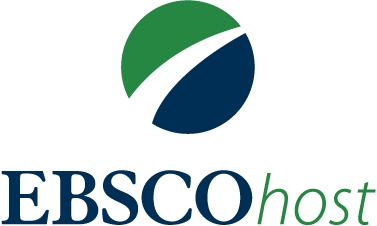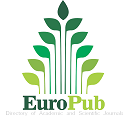Adaptation of Extended Self Scale into Turkish: Validity and Relaibility Study
Abstract
The purpose of this study is to adapt and examine the psychometric properties of Turkish form of Extended Self Scale. The original scale was developed in the contex of “mountain biking”. This adaptation study set the contex of extended self as “aoutomobile owning”; in order to lead to other Turkish studies on self and consumption relations that might study extended self with other consumption materials. The study was conducted on 311 automobile owners over 18 years old. Scale was studied in general survey method and translation method used was translation-back translation method. The psychometric properties of the scale were examined by internal consistency, exploratory and confirmatory factor analysis and item analysis methods with SPSS and AMOS programmes. The exploratory and confirmatory factor analysis determined the scale structure with 3 factors. The model’s and CFA’s compatibility was examined through index values; and index values of the scale were determined as “acceptable” and “excellent”. The Chi-Square per Degrees of Freedom Ratio was found to be 2.758, the Comparative Fit Index (CFI) was 0.93, and the Root Mean Square Error of Approximation (RMSEA) was 0.075. The reliability of the Extended Self Scale was assessed using the internal consistency coefficient (Cronbach's Alpha) method, and the internal consistency coefficient of the scale was found to be 0.928. As the analysis of the research regarded; on self and consumption based field studies; Extended Self Scale can be defined as a scale which can be used in determining the self extension tendency.
Metrics
References
Akgül D. (2020). Gösterişçi tüketim ile benlik genişleten #pembegelinler: netnografi uygulaması. Nitel Sosyal Bilimler, 2(1), 40-59.
Akın, S. M. (2021). Benlik kurgusu ve materyalizmin gösterişçi tüketim eğilimine etkisi. Doğuş Üniversitesi Dergisi, 22(1), 219-239. DOI: https://doi.org/10.31671/dogus.2021.471
Alarçin, Y. E. (2019). Benlik, kendini izleme ve gösterişçi tüketim ilişkisine yönelik bir araştırma. Kırıkkale Üniversitesi Sosyal Bilimler Dergisi, 9(2), 361-390.
Aliyev, F., Seuring, S. & Wagner, R. (2019). Common and contradictory motivations in buying intentions for green and luxury automobiles. Sustainability, (11), 3268-3287. DOI: https://doi.org/10.3390/su11123268
Anderson, R. E., Hair, J. F., Black, W. C. & Tatham, R. L. (2010). Multivariate data analysis. Pearson Publishing.
Asıl, S. (2017). Tüketimde benlik algısı: Sosyal medya hesaplarında tüketici olmak. ÇOMÜ Uluslararası Sosyal Bilimler Dergisi, 2(3), 1-22. DOI: https://doi.org/10.31454/usb.381447
Balıkçıoğlu, B. (2016). Benlik-imajı uyumunun retoriği: Bana ne tükettiğini söyle sana kim olduğunu söyleyeyim. İnsan ve Toplum Bilimi Araştırmaları Dergisi, 5(3), 537-553. DOI: https://doi.org/10.15869/itobiad.21155
Baltacı, A. (2019). Kompulsif satın almada durumsal faktörler ve benlik algısının etkisi üzerine bir araştırma. [Yayımlanmamış doktora tezi]. Başkent Üniversitesi, Ankara.
Baltacı, A. (2020). Tüketici davranışlarında benlik saygısı kavramı: Bir literatür taraması. Bucak İşletme Fakültesi Dergisi, 3(2), 257-269. DOI: https://doi.org/10.38057/bifd.735694
Belk, R. W. (1988). Possessions and the extended self. Journal of Consumer Research, 15(2), 139–168. DOI: https://doi.org/10.1086/209154
Belk, R. W. (2004). Men and their machines. Advances in Consumer Research, (31), 273-278.
Belk, R. W. (2013), Extended self in a digital world. Journal of Consumer Research, (40), 477- 500. DOI: https://doi.org/10.1086/671052
Bettman, R. J., Ferraro, F. & Escalas J. E. (2011). Our possessions, our selves: Domains of self-worth and the possession-self link. Journal of Consumer Psychology , 21(2), 169-177. DOI: https://doi.org/10.1016/j.jcps.2010.08.007
Binay, A. (2010). Tüketim vasıtasıyla oluşturulan postmodern kimlikler. Global Media Journal Turkish Edition, 1(1), 18-31.
Bozzo, C. & Khan, M. A. (2012). Self concept and brand preference: Moderating role of type of product usage [Conference Presentation]. International IJAS Conference for Academic Disciplines, USA.
Candiotto, L. & Piredda, G. (2019). The affectively extended self: A pragmatist approach humana.mente. Journal of Philosophical Studies, (36), 121 – 145.
Chen, C. H., Wu, M.S. & Nguyen, B. (2015). Luxury brand purchases and the extended self: A cross-cultural comparison of young female consumers in Taiwan and the UK. Asia-Pacific. Journal of Business Administration, 7(3), 153-173. DOI: https://doi.org/10.1108/APJBA-05-2015-0046
Chen, Y., Chiang, J., Lin, C. & Zhang, Y. (2020). A study on demand for visible good – Status signaling through children’s clothing. (CEIBS Working Paper, No. 030/2020/MKT, 2020).
Cluci, M., Manolica, A. & Roman, T. (2021). The consumer explained through the extended- self. “Ovidius” University Annals, Economic Sciences Series, 21(1), 572-580. DOI: https://doi.org/10.61801/OUAESS.2021.1.81
Çelik, S. Ş. & Oflazoğlu, S. (2020). Avatarın kadar konuş: Farklı olma ihtiyacı ve materyalizm eğiliminin genişletilmiş benlik üzerindeki etkisi. Pazarlama ve Pazarlama Araştırmaları Dergisi, (25), 1-19.
Çetin B. & İlhan M. (2014). LISREL ve AMOS programları kullanılarak gerçekleştirilen yapısal eşitlik modeli analizlerine ilişkin sonuçların karşılaştırılması. Eğitimde ve Psikolojide Ölçme ve Değerlendirme Dergisi, 5(2), 26-42. DOI: https://doi.org/10.21031/epod.31126
Çildir, Ç. & Fettahoğlu S. H. (2022). Genişletilmiş benlikte Diderot etkisi: Bağlamsal bir kavram olarak eşik deneyimlerin brikolaj çalışması ile teorik entegrasyonu. Journal of Social, Humanities and Administrative Sciences, 8(58), 1552-1567. DOI: https://doi.org/10.29228/JOSHAS.66031
Dittmar, H. & Drury, J. (2000). Self-image – is it in the bag? A qualitative comparison between “ordinary” and “excessive” consumers, Journal of Economic Psychology, 21 (2), 109-142. DOI: https://doi.org/10.1016/S0167-4870(99)00039-2
Dodson, J. K. (1996). Peak experiences and mountain biking: Incorporating the bike into the extended self. Advances in Consumer Research, (23), 317-322.
Everitt, B. (1975). Multivariate analysis: The need for data, and other problems. British Journal of Psychiatry, (126), 237-240. DOI: https://doi.org/10.1192/bjp.126.3.237
Goffman, E. (2009). Günlük yaşamda benliğin sunumu. (Çev. B. Cezar). İstanbul: Metis Yayınları. (Orijinal yayın tarihi, 1956)
Guilford, J. P. (1954). Psychometric methods (2nd ed.). McGraw-Hill Publishing.
Günlü, A. & Uz B. A. (2020). Genişletilmiş benlik kuramı bağlamında nomofobi. İnsan ve Toplum Bilimleri Araştırmaları Dergisi, 9(5), 3853-3873. DOI: https://doi.org/10.15869/itobiad.778313
Kağıtçıbaşı, Ç. (2007). Family, self, and human development across cultures: Theory and applications (2nd ed.). Lawrence Erlbaum Associates.
Karasar, N. (2018). Bilimsel araştırma yöntemi. (24. bs.) Nobel Yayın Dağıtım.
Markus, R. H. & Kitayama, S. (1991) Culture and the self. Psychological Review, 2 (98) , 224-253. DOI: https://doi.org/10.1037//0033-295X.98.2.224
Meydan, C. H. & Şeşen, H. (2015). Yapısal Eşitlik Modellemesi AMOS Uygulamaları. Detay Yayıncılık.
Olsson, B. M. (2020). Do you really need it? A qualitative study of conspicuous consumption in relation to self-identitiy [Unpublished master degree thesis]. Lund University, Sweeden.
Öztürk, A. Ş. (2019). Çeyize yönelik tüketim olgusunu kuşaklararası anlamak: Fenomenolojik bir araştırma [Yayımlanmamış doktora tezi]. Eskişehir Anadolu Üniversitesi, Eskişehir.
Sabah, Ş.(2017) Pırlantam olmadan asla. Kadınların bireysel kimlik ve pırlanta evlilik yüzüğü ilişkileri. Anadolu Üniversitesi Sosyal Bilimler Dergisi.17 (2),67-84 DOI: https://doi.org/10.18037/ausbd.417242
.
Sabah Ç. Ş. (2020). “Gecekondu varken AnkaraGüçsüz kalmaz”: Genişletilmiş benlik kuramı ve tüketim bağlamında futbol taraftarlığı, Çankırı Karatekin Üniversitesi İİBF Dergisi, 10 (2), 509-- 547.
Schuster, C. & Wolf, U. (2019). I own, therefore I am? The role of material possession for consumers’ selfperception and attitude towards non-ownership consumption modes [Unpublished master degree thesis]. Leuphana University, Lüneburg.
Sivadas, E. & Venkatesh, R. (1995). An examination of individual and object-specific influences on the extended self and its relation to attachment and satisfaction, Advances in Consumer Research, (22), 406-412.
Solomon, R. M. (2019). Consumer behavior: Buying, having, and being (13th ed.). Pearson Publishing.
Sümer, N. (2000). Yapısal eşitlik modelleri: Temel kavramlar ve örnek uygulamalar. Türk Psikoloji Yazıları, 3 (6), 49-74.
Tektaş Ö. Ö. & Uğur, B. (2018). Benlik uyumu ve fonksiyonel uyumun tüketici-marka bağı üzerindeki etkisi: Cep telefonu kullanıcıları üzerine bir çalışma. Pazarlama ve Pazarlama Araştırmaları Dergisi, (22), 249-272.
Toth, M. (2014). The role of self-concept in consumer behaviour [Unpublished master degree thesis]. University of Nevada, Las Vegas.
Türkiye İstatistik Kurumu (t.y.). Motorlu Kara Taşıtları Araştırması. Mayıs 05, 2024 de https://data.tuik.gov.tr den erişildi
Yolcu, T. (2013). Türk tüketicilerindeki otomobil imgesinin kültürel kodları üzerine bir araştırma [Konferans Sunumu]. 11. International Conference on Knowledge, Economy and Management, Malta.






















